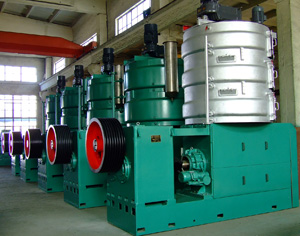Coconut oil is a kind of cooking oil extracted form the core of the coconut meat or mature harvest of coconut trees. In tropical countries, provide first-hand fat diet to millions of people for generations. It has many kinds of application in food, medicine, industry. Coconut oil is the most common refining, bleaching deodorised RBD coconut oil or coconut oil production of coconut drying. RBD coconut oil is pressed from copra. Copra is coconut dried in sunlight, smoking and heating. During the production process, chemical and heated to high temperature oil, where they can form a certain percentage of trans fatty acids, which helps to arteriosclerosis, heart disease and diabetes. Because the coconut oil is made with high temperature and chemical material, the taste of it becomes bland and contains 3-4% of the lauric acid. RBD coconut oil is cheap cooking oil widely used in the Far East. Coconut oil can be extracted both the "dry" and "wet" treatment. Dry manufacturing methods of the coconut oil extracting process needs the dry coconut meat from the shell with fire, and the sun or kiln. Coconut meat is pressed or dissolved with the solvent, the coconut oil production and high protein, high-fiber mash which is lower quality for people consumption, but proper to feed the animals, no process protein will be extracted from the mash. Coconut meat of reagent preparation and storage facilities in health conditions happen often, this will lead to inferior oil refining before need consumption. Quite a number of oil is lost because consumption insects and rodents in the extraction process.
Coconut oil milling process contains cleaning, crushing, cooking, oil extraction screening and filtration. Copra is cleaned of metals, dirt and other foreign matter and broken into fine particle sizes. The crushed copra that has about 5-6 percent moisture is passed through a steam-heated cooker. Moderately high temperature facilitates the expelling action. Oil is able to flow out more easily due to decrease in viscosity proteins and other substances present in the copra. Heating dries and shrinks these substances. Moisture content of copra is about 3 percent when it leaves the conditioner. In the expeller, the milled copra is subjected to high-pressure oil extraction. The oil extracted in the expeller flows into the screening tanks to remove the entrained foots from the oil. While travelling across the screen, oil is drained out of foots. The filtered oil flows into a surge tank from where it is finally pumped to the coconut oil storage tank. The oil is passed through a plate and frame filter press to further remove the solids in the oil. The coconut oil is edible after this oil milling process and can be sold in the market or local grocery. Coconut oil pressing process is not complicated, and you can know more details through the internet or ask the manufactures for information. It helps when you start your coconut oil extracting process if you know as much as you can about this process.
Next article will talk about coconut oil refining plant and corn oil processing unit.

No comments:
Post a Comment
Note: Only a member of this blog may post a comment.